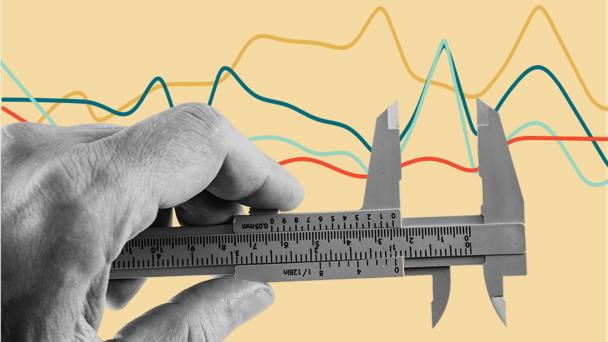Investors increasingly recognize that portfolio diversification is not a luxury but a necessity, especially as financial goals move closer and the remit of investment tightens. In a landscape where focus often centers on growth, the value of spreading risk across multiple asset types becomes even more pronounced. This approach helps align potential returns with the evolving time horizon and risk tolerance of the investor. By broadening exposure beyond traditional stocks and cash, portfolios can better weather volatility and uncertainty. The idea is to create a balanced mix that supports growth while cushioning the impact of drawdowns in any single market segment. This is particularly relevant when goals approach maturity, as the need for capital protection and predictable outcomes grows. Diversification is not about chasing every possible return; it is about structuring a resilient framework that preserves capital while still offering upside potential.
The Imperative of Diversification as Financial Goals Converge
Diversification serves as a core risk management tool in any investment plan, but its importance intensifies when investors reassess their remit in light of impending milestones. As time horizons shorten, the risk profile of a portfolio can become more sensitive to macroeconomic shifts, policy changes, and market cycles. A diversified portfolio mitigates company- or sector-specific shocks that could otherwise derail a narrow investment focus. It lowers the likelihood of large, abrupt losses that might jeopardize the ability to meet near-term objectives. Moreover, diversification helps smooth performance across varying market regimes, enabling a more dependable path toward target outcomes. The concept extends beyond merely owning a spread of asset classes; it embodies thoughtful allocation that reflects correlation dynamics, liquidity needs, and the evolving risk appetite of the investor as goals draw nearer.
A well-structured diversification strategy considers several key dimensions. First, it assesses the correlation between assets—how different investments move in relation to one another. When assets are not perfectly correlated, a poor-performing segment can be offset by strength in another, reducing portfolio volatility. Second, it evaluates liquidity—the ease with which an asset can be bought or sold without significantly affecting its price. This is crucial for investors nearing milestones who may need to access cash or reallocate quickly. Third, it incorporates time horizon and risk tolerance, recognizing that shorter horizons tend to favor less volatile investments while still offering growth potential. Fourth, it accounts for inflation risk and the potential erosion of purchasing power, ensuring that the portfolio includes assets with the ability to preserve real value over time. Fifth, it weighs costs, including management fees, taxes, and trading taxes, which can erode returns if ignored.
As part of this framework, investors should consider both traditional and alternative assets to create a resilient core and satellite approach. The core may comprise broad, cost-efficient holdings designed to capture long-term growth and stability, while satellites can introduce strategic tilts toward sectors with favorable risk-adjusted returns or hedging properties. This dual structure supports a diversified engine that can adapt to changing conditions without dramatically compromising the overall risk/return profile. In practice, diversification necessitates ongoing reassessment. Market dynamics evolve, correlations shift, and the risk landscape responds to policy, geopolitical events, and technological disruption. A disciplined rebalancing process helps maintain the intended risk exposure and keeps the portfolio aligned with the investor’s remitted goals as they near completion.
A diversified approach also acknowledges that not all diversification is created equal. Some asset classes provide meaningful diversification benefits but come with liquidity or regulatory constraints that require careful management. Others offer inflation hedging properties or defensive characteristics that underscore their role during periods of market stress. The objective is to assemble a mosaic of assets whose combined behavior over time yields a more stable and resilient outcome than any single market could deliver alone. By embracing this philosophy, investors position themselves to pursue favorable returns while maintaining a prudent risk posture as financial objectives approach, intensify, or demand different capital needs.
Alternative Asset Classes That Strengthen Diversification
Beyond traditional stocks and bonds, several alternative assets have the potential to diversify risk, provide inflation protection, and contribute to more robust portfolio performance over time. Among these, renewable energy, infrastructure, commodities, bonds, and commercial property stand out as substantial contributors when selected and managed with care. Each category carries distinct characteristics—return profiles, volatility, liquidity, and macro sensitivity—that can complement a diversified framework when integrated thoughtfully into a broader strategy.
Renewable energy projects and related infrastructure investments offer exposure to long-duration cash flows tied to the transition toward cleaner energy sources. These assets can produce stable, predictable income streams through power purchase agreements, regulated tariffs, or long-term contracts. They also benefit from structural tailwinds as governments and corporations accelerate decarbonization efforts, which can support demand for solar, wind, and other clean energy technologies. However, they come with considerations such as construction risk, regulatory changes, credit risk within project sponsors, and the need for specialized oversight. A diversified allocation across different technologies, geographies, and project developers can help mitigate idiosyncratic risks and improve resilience.
Infrastructure investments extend beyond energy and include transportation networks, utilities, and social infrastructure. They often deliver reliable cash flows and can be less correlated with public equity markets than traditional equity benchmarks. These assets may provide inflation-linked returns or cash flows tied to user-based revenues, making them attractive as a diversification tool in uncertain macro environments. The long-term nature of infrastructure investments tends to align with extended investment horizons but can pose liquidity challenges and require careful appraisal of concession risk, political risk, and regulatory regimes. A diversified infrastructure exposure, spread across asset classes and regions, can enhance a portfolio’s resilience to economic cycles.
Commodities represent another meaningful diversification channel, offering exposure to physical diversification and distinct macro drivers—supply constraints, geopolitical tensions, and commodity-specific demand cycles. Exposure to broad commodity indices or baskets can help hedge against inflation and serve as a hedge against more prolonged periods of macro uncertainty. Within commodities, investors might differentiate between energy, metals, and agricultural products to manage risk and capture varied sources of return. It is essential to acknowledge that commodity investments can be more volatile and can exhibit heightened price swings, influenced by macro shocks, currency movements, and speculative activity. A disciplined approach, including ongoing risk monitoring, position sizing, and clear exit strategies, helps maintain a balanced inclusion of commodities within a diversified portfolio.
Bonds remain a foundational element for risk management and diversification, even as global yields fluctuate. Fixed-income instruments provide income, capital preservation, and, depending on duration and credit quality, diversification benefits that can dampen equity market volatility. In diversified portfolios, bonds can offset equity risk during downturns, contributing to a more stable overall return pattern. The bond universe is broad, spanning government debt, investment-grade corporate debt, high-yield securities, and inflation-linked bonds. Each segment carries different sensitivity to interest rate changes, credit risk, and liquidity profiles. An intentional mix, tailored to the investor’s horizon, risk tolerance, and tax considerations, can enhance diversification while supporting a more predictable income stream.
Commercial property, including office, retail, industrial, and logistics real estate, offers tangible diversification benefits and potential income stability. Real estate exposure can provide yields that are less correlated with traditional equities and bonds, particularly in certain market cycles. The asset class also offers diversification advantages through capital appreciation potential and income generation from rents. Yet, commercial property requires careful assessment of market dynamics, occupancy trends, lease structures, financing costs, and location-specific risks. A diversified approach within real estate—spreading across property types and regions—can help mitigate sector-specific shocks and contribute to a more robust portfolio profile.
A well-constructed mix of these alternative assets requires careful due diligence, risk management, and ongoing monitoring. Each asset class has its own operational, regulatory, and liquidity considerations that influence how it should fit into an overall portfolio. The integration process benefits from a clear framework that defines target allocations, risk budgets, and rebalancing rules. When thoughtfully implemented, diversification through alternative assets can complement traditional holdings, enhancing resilience while preserving the potential for meaningful returns. Investors should pair these investments with transparent governance, rigorous valuation, and robust risk controls to ensure they contribute positively to the long-term objectives and resilience of the portfolio.
Precious Metals and Silver: A Strategic Diversifier
Precious metals have long been considered an essential complement to diversified portfolios, offering a distinct set of attributes that can complement traditional equities and bonds. Among the precious metals, silver occupies a unique position due to its dual role as both a store of value and an industrial input. The ongoing global demand for silver—spanning electronics, solar photovoltaics, medical applications, and various manufacturing sectors—can introduce a countercyclical element to a diversified allocation. For investors seeking to balance risk and return, silver can function as a defensive tilt in a rising risk environment and as a potential accelerator of gains when industrial demand strengthens and inflationary pressures build.
The case for silver as a diversification tool rests on several practical considerations. First, its price dynamics often reflect a blend of monetary considerations and industrial demand, which can behave differently from equity and bond markets. This dual exposure can help decouple silver’s performance from traditional risk drivers, potentially reducing portfolio drawdowns during equity market selloffs. Second, silver’s relatively lower price point compared with gold enhances accessibility and allows for meaningful position sizing within a diversified framework. This practical aspect can improve portfolio robustness by enabling investors to experiment with tactical allocations without requiring a large capital outlay. Third, silver has historically exhibited periods of sharp price movements driven by shifts in supply and demand fundamentals, which, when managed within a disciplined strategy, can contribute to attractive risk-adjusted returns.
However, investors should approach precious metals, including silver, with an awareness of their unique risk characteristics. Silver can be more volatile than major equity indices over certain horizons, and its price can be influenced by industrial cycles and speculative activity. Storage costs, liquidity considerations, and the potential for rapid capital outflows during stress periods must be weighed as part of the decision to include silver in a diversified portfolio. A strategic allocation to silver—rather than a speculative bet—should be anchored in a well-articulated investment thesis that considers macroeconomic indicators, inflation expectations, and the portfolio’s overall risk budget. When used judiciously, silver can act as a valuable complement to a diversified asset mix, contributing to inflation protection and potential upside while helping to cushion portfolio volatility through periods of market uncertainty.
In practice, integrating silver into a diversified portfolio involves careful position sizing, clear risk controls, and alignment with broader strategic objectives. A deliberate approach can include tiered exposure—a core minimum holding that reflects the portfolio’s risk tolerance and a smaller tactical component designed to respond to short-term signals related to inflation, currency movements, or industrial demand surges. It is also prudent to monitor liquidity and market depth, ensuring that the exposure does not unduly constrain the portfolio during periods of stress. To maximize benefits, silver should be considered as part of a holistic diversification plan rather than as a standalone hedge. Its role within the portfolio gains strength when combined with other defensive assets and inflation-linked instruments, improving the odds of achieving smoother performance across varying market regimes.
Market Dynamics: Equity Focus and Defensive Assets in a Wall of Worry
In today’s markets, the phrase wall of worry captures a prevailing sentiment: investors are navigating a complex mix of macro headwinds, geopolitical tensions, inflation dynamics, and policy shifts, yet equity markets often march higher. This paradox—rising prices amid heightened uncertainty—can tempt investors to maintain a concentrated exposure to equities, potentially at the expense of diversification. The logic of defensive assets remains intact, but the timing and composition of defense are evolving. An effective diversification strategy recognizes that defensive assets are not inherently unproductive; rather, their value lies in their capacity to dampen volatility and preserve capital when risk-off periods occur.
The current environment underscores the importance of a balanced approach to risk management. While equities may deliver long-term growth, their near-term path is frequently affected by macro surprises, policy surprises, and shifts in investor sentiment. Defensive assets—such as high-quality bonds, inflation-linked securities, real estate with stable cash flows, and, where appropriate, precious metals—can provide ballast during episodes of market stress. The interplay between risk-on and risk-off dynamics suggests that a diversified mix, tuned to the investor’s horizon and risk tolerance, can capture opportunities in growth channels while preserving capital when markets turn volatile.
An effective portfolio in this climate also benefits from an awareness of cross-asset correlations and regime shifts. In some periods, traditional diversification effects may temporarily weaken as correlations converge during crises. In others, diversification can be enhanced by emphasizing assets with different economic sensitivities or exposure to distinct drivers, such as commodity cycles, real assets, and currency dynamics. A thoughtful strategy will incorporate tolerance for drawdowns in some components while maintaining a path to recovery through others. This approach minimizes the risk of abrupt, large losses and supports a more resilient journey toward long-term objectives.
Investors should also consider the implications of currency exposure and geographic diversification. Global markets can move in unison when macro forces dominate, yet regional differences in monetary policy, fiscal stance, and growth trajectories can create diversification opportunities across geographies. Currency movements can amplify or dampen returns, so cross-border exposure should be aligned with risk appetite and liquidity considerations. A well-rounded strategy often includes a mix of domestic and international assets with careful attention to hedging or unhedged currency risk, as appropriate for the investor’s tax status, cost structure, and investment mandate.
In summary, while equities may continue to be a primary engine of growth, an effective diversification framework acknowledges the value of defensive assets and alternative exposures. The objective is to achieve a more stable return profile and to reduce the probability of material capital erosion during adverse periods. By integrating assets with different risk drivers and ensuring they complement one another, investors can navigate the wall of worry with greater confidence and a clearer pathway toward meeting their near-term and longer-term financial goals.
Building a Practical, Diversified Portfolio
Constructing a portfolio that embodies robust diversification requires a structured, repeatable process. The starting point is a clear articulation of the investor’s remit—encompassing time horizon, liquidity needs, risk tolerance, and target outcomes. With these parameters in place, the next steps involve selecting a mix of assets that deliver the intended risk/return balance and align with the investor’s long-term plan while addressing near-term capital requirements.
A disciplined allocation framework often combines core holdings with opportunistic satellites. The core is designed to deliver broad exposure, low costs, and stable growth characteristics. It typically includes broad market equities, high-quality bonds, and essential income-producing real estate or infrastructure investments. Satellites introduce strategic tilts toward diversification benefits offered by alternative assets such as renewable energy projects, commodities, or precious metals like silver. The satellite portion is sized to maximize risk-adjusted returns without compromising the core’s stability.
Risk management is a central pillar of portfolio construction. A robust risk framework defines exposure limits, monitoring processes, and contingency plans for adverse scenarios. This includes stress testing across macroeconomic shocks, such as spikes in inflation, sudden shifts in policy, or geopolitical events, to evaluate how the portfolio would respond under different conditions. Rebalancing rules ensure that drift away from the target allocation is corrected in a disciplined manner, preserving the intended risk budget and helping maintain alignment with evolving goals. Rebalancing can be scheduled or triggered by explicit thresholds, with tax considerations and transaction costs incorporated into the decision process.
Cost efficiency is another critical factor. Fee structures, expense ratios, and the tax implications of foreign investments and alternative assets can materially affect net returns. Selecting vehicles with favorable tax treatment, low turnover, and transparent valuation methodologies supports better long-term outcomes. Where possible, passive or low-cost index-based exposures can anchor the core, while selective active or thematic strategies may be employed for satellites to capture alpha opportunities within diversified risk controls.
Liquidity requirements must be integrated into every step. Near-term liquidity needs influence the choice of assets and the acceptable level of market risk. Illiquid assets, such as certain infrastructure projects or real estate, may offer enhanced yield or diversification but require careful liquidity planning and longer investment horizons. A thoughtful plan can include a mix of liquid exposures for immediate needs and longer-dated, diversified illiquid positions for growth and diversification benefits. This balance ensures that investors can meet short-term obligations without compromising long-term ambitions.
Geographic and sectoral diversification further strengthen the portfolio. Spreading investments across regions, currencies, and sectors reduces exposure to any single country or industry’s cycle. It also exposes the investor to a wider set of growth drivers and policy environments, which can help smooth performance across different market regimes. A diversified geographic footprint should consider regulatory risk, currency risk, and taxation, alongside macroeconomic fundamentals and growth expectations. In practice, a well-designed portfolio integrates global opportunities while maintaining practical considerations such as accessibility and cost.
Monitoring and governance are essential to sustain diversification over time. Regular reviews of asset allocation, performance, and risk analytics help ensure the portfolio remains aligned with the investor’s remit. Governance frameworks, including documented investment policies and decision rights, provide clarity and accountability. The ongoing evaluation should examine correlations, drawdown histories, and the performance of alternative assets in different market cycles. This disciplined oversight supports continuous improvement in diversification, enabling investors to adapt to evolving market dynamics without losing sight of their core objectives.
In implementing diversification, it is important to be mindful of potential pitfalls. Over-diversification can lead to diluted returns and complexity that erodes transparency. Under-diversification, especially in volatile markets, can expose the portfolio to outsized losses. A balanced approach—focusing on meaningful diversification across asset classes, while avoiding unnecessary fragmentation—tends to deliver more stable outcomes. Finally, education and clear communication with stakeholders ensure that expectations remain realistic and aligned with the portfolio’s risk framework and long-term ambition. By combining strategic asset allocation, disciplined risk management, and thoughtful inclusion of alternative assets, investors can pursue resilient growth while maintaining a protective stance suitable for nearing financial objectives.
Conclusion
Diversification stands as a foundational principle for prudent investing, especially when financial goals are approaching and the remit of investment tightens. By expanding beyond traditional stocks and bonds to include alternative assets such as renewable energy, infrastructure, commodities, bonds, and commercial property, portfolios gain resilience against market shocks and macroeconomic shifts. The addition of precious metals, particularly silver, offers a nuanced diversification that blends inflation hedging potential with industrial demand exposure, enhancing the portfolio’s capacity to navigate uncertain environments. The practical implementation of a diversified strategy involves clear goal-setting, careful risk budgeting, disciplined rebalancing, cost awareness, and thoughtful liquidity planning. In a market characterized by the wall of worry and cycles of risk-on and risk-off sentiment, a well-constructed, diversified framework can provide steadier performance, improved risk-adjusted returns, and a clearer path toward meeting near-term obligations and longer-term objectives. By maintaining a rigorous approach to asset selection, allocation, and governance, investors can build portfolios that are not only diversified but also resilient, adaptable, and aligned with their evolving financial remit.



